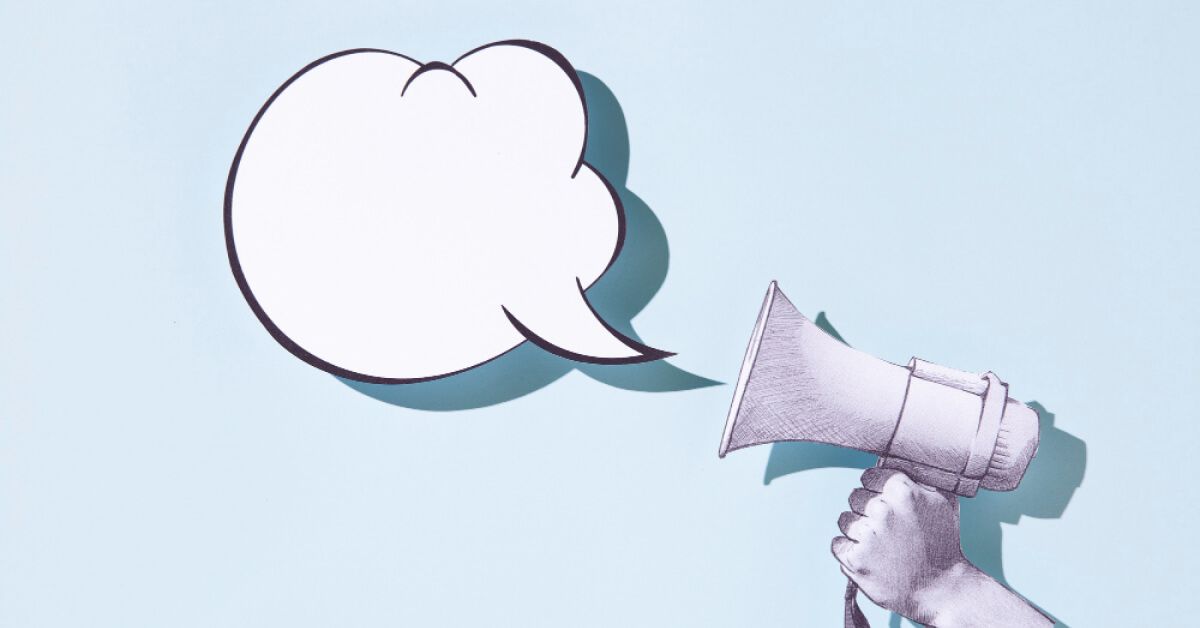55+ Employee shout-out examples to drive positive culture in 2025

Remember calling your local radio station to dedicate a song? Maybe it was cheesy. Maybe they actually played it. Either way, you waited for that shout-out, and when it came, it felt personal and electric.
That’s the magic of a well-timed shout-out. It’s quick, public, and unforgettable when done right.
In this blog, we’re queuing up 55+ employee shout-out examples that are perfect for Slack, team meetings, email threads, or even a LinkedIn moment. Whether you're a manager, HR lead, or the culture torchbearer, these templates help turn everyday praise into something that actually lands and lasts.
What is an employee shoutout at work?

An employee shoutout at work is a powerful form of recognition that celebrates the exceptional contributions, achievements, or positive behaviors of individual employees within an organization. It's a public acknowledgment that highlights an employee's dedication, hard work, or exemplary performance in their role.
Employee shout outs can take various forms, from a simple mention during a team meeting or company-wide email to a more elaborate recognition ceremony. Regardless of the format, the essence remains the same: to express gratitude and appreciation for a job well done.
For instance, suppose one of your team members consistently goes above and beyond in delivering outstanding results on a project. In that case, giving them a shoutout not only recognizes their hard work but also reinforces a culture of appreciation and motivates others to strive for excellence.
Why are employee shout outs necessary?

Employee shout outs are essential components of fostering a positive work environment and acknowledging outstanding contributions within organizations. In this section, we explore the significance of employee shoutouts, highlighting their role in boosting morale, reinforcing company values, and driving organizational success.
- Builds a culture of appreciation: Regular shoutouts make appreciation a visible, everyday practice that boosts team morale.
- Improves morale and motivation: Employees feel energized and encouraged when their efforts are publicly acknowledged.
- Drives employee engagement: Recognition makes people feel seen and heard, leading to deeper involvement and contribution.
- Reinforces values and behaviors: Celebrating employees who reflect company values helps set the standard for everyone.
- Boosts retention and loyalty: Feeling valued increases commitment and reduces the risk of employees leaving.
- Strengthens collaboration: When individuals are recognized, it inspires a ripple effect of teamwork and support.
- Encourages personal growth: Praise for progress pushes employees to keep learning, improving, and striving for excellence.
- Deepens employer-employee relationships: Thoughtful shoutouts help build trust and stronger connections across teams.
- Impacts business outcomes: Recognition fuels productivity and innovation thus ultimately helping the company grow.
- Proven by research: According to a survey by Gallup, teams that receive regular recognition are found to be much more productive.
These statistics underscore the importance of employee shoutouts in fostering a positive work culture and driving employee satisfaction and retention.
How do you write an employee shoutout?

By following these guidelines, you can effectively craft meaningful and impactful shoutouts that not only recognize employee efforts but also foster a culture of appreciation and motivation in the workplace.
- Start with a positive greeting: Begin the employee shoutout with a warm and positive greeting, addressing the individual or the team member being recognized.
- Be specific and genuine: Provide specific details about the employee's achievements, contributions, or positive behaviors. Ensure that your praise is genuine and heartfelt, avoiding generic statements.
- Highlight impact: Explain how the employee's actions have positively impacted the team or organization. Use concrete examples of employee impact to illustrate their significance.
- Express gratitude: Express sincere gratitude and appreciation for the employee's hard work, dedication, and positive attitude. Let them know their efforts are valued and recognized.
- Encourage others: Encourage other team members to emulate the recognized employee's behavior or achievements. Reinforce the importance of the values or behaviors being recognized.
- End on a positive note: Conclude recognition message of the shoutout on a positive note, reiterating your appreciation and offering congratulations or best wishes if appropriate.
- Consider delivery method: Choose an appropriate delivery method for the shoutout, such as during a team meeting, in a company-wide email, or on a recognition platform.
- Personalize if possible: If feasible, personalize the shoutout to the individual employee's preferences or interests. This shows that you value them as a unique member of the team.
- Follow-up if necessary: Follow up with the employee after the shoutout to see how they're doing and to reinforce the appreciation expressed. This helps to maintain the positive impact of the employee recognition message.
- Link it to career growth: Where possible, connect the shoutout to the employee’s career journey. Showing how their contributions support long-term growth makes the praise more meaningful and forward-looking.
7 Unique best practices for writing employee shoutouts
Crafting meaningful employee shoutouts goes beyond ticking a recognition box, it's about building human connection and reinforcing values authentically. Here are seven fresh best practices to elevate your approach:
- Match tone to personality: Use a tone that resonates with the employee’s style, light and witty for some, formal and sincere for others. The right voice amplifies impact.
- Recognize progress, not just milestones: Celebrate growth journeys, not just end results. A shoutout for consistent improvement or bouncing back from setbacks fosters resilience and boosts morale.
- Tie recognition to values: Map shoutouts to company values or team principles. This reinforces cultural alignment while showing that daily actions ladder up to the bigger mission.
- Acknowledge behind-the-scenes efforts: Not all contributions are front-and-center. Recognizing quiet excellence like proactive problem-solving or mentoring builds trust and inclusivity.
- Include personal touches: Add specific details, like an inside joke or team memory, that show you really noticed and valued their contribution.
- Make it inclusive: Ensure your shoutouts reach diverse roles and personalities. Don’t limit praise to only vocal or high-visibility performers, shine the light everywhere.
- Encourage reflection: Invite recipients to reflect on what they’re proud of. This transforms shoutouts into two-way moments that deepen emotional engagement and self-awareness.
55+ Employee shout out message examples to get inspired from in 2025

Let's kickstart your employee recognition efforts with examples tailored to celebrate the exceptional achievements and contributions of your team members in 2025.
- "Big shoutout to [Employee's Name] for going above and beyond to meet tight deadlines this week! Your dedication is truly commendable."
- "Kudos to [Employee's Name] for consistently delivering exceptional results. Your hard work does not go unnoticed!"
- "A round of applause for [Employee's Name] for demonstrating outstanding teamwork and collaboration on our latest project."
- "Shoutout to [Employee's Name] for consistently embodying our company values and setting a positive example for the whole team."
- "Special thanks to [Employee's Name] for taking the initiative to implement innovative ideas that have significantly improved our processes."
- "I want to recognize [Employee's Name] for their exceptional customer service skills. You always go the extra mile to ensure our clients are satisfied."
- "Hats off to [Employee's Name] for their outstanding leadership and guidance, which has been instrumental in our team and company's success."
- "Shoutout to [Employee's Name] for their resilience and adaptability in navigating challenging situations. Your positive attitude is truly inspiring."
- "A big thank you to [Employee's Name] for consistently exceeding expectations and raising the bar for excellence."
- I want to recognize [Employee's Name] for their creative approach to solving tough challenges. Your innovative mindset brings energy to our team.
- Kudos to [Employee's Name] for their dedication to professional development and continuous learning. Your growth mindset is admirable.
- Shoutout to [Employee's Name] for their flawless documentation skills that help everyone stay aligned and on the same page.
- A round of applause for [Employee's Name] for their outstanding performance in meeting sales targets. Keep up the fantastic work!
- Special thanks to [Employee's Name] for their willingness to help out wherever needed. Your versatility is greatly appreciated.
- Hats off to [Employee's Name] for expertly balancing deadlines while staying detail-oriented—your prioritization skills shine through.
- Shoutout to [Employee's Name] for their positive impact on team morale. Your enthusiasm is contagious!
- I want to recognize [Employee's Name] for their exceptional problem-solving abilities. You always find creative solutions to challenges.
- Kudos to [Employee's Name] for their dedication to fostering a supportive and inclusive work environment. Your efforts do not go unnoticed.
- A big thank you to [Employee's Name] for consistently demonstrating professionalism and integrity in all interactions.
- I want to recognize [Employee's Name] for their outstanding communication skills, which ensure clarity and alignment within the team.
- Shoutout to [Employee's Name] for managing shifting priorities with grace—your agility keeps us moving forward smoothly.
- Special thanks to [Employee's Name] for their willingness to mentor and support junior team members. Your guidance is invaluable.
- Hats off to [Employee's Name] for their resilience in the face of challenges. Your ability to stay calm under pressure is admirable.
- Shoutout to [Employee's Name] for ensuring zero errors in our final delivery—your quality checks saved the day!
- A big thank you to [Employee's Name] for their proactive approach to problem-solving. Your initiative is greatly appreciated.
- I want to recognize [Employee's Name] for earning top praise from a key client. Your relationship-building makes a real difference.
- Kudos to [Employee's Name] for embracing new responsibilities without hesitation. You adapt with confidence and competence.
- A round of applause for [Employee's Name] for championing our process improvements. You’re setting the standard for innovation.
- Special thanks to [Employee's Name] for their positive attitude and infectious energy. You brighten up our workplace every day.
- Hats off to [Employee's Name] for their exceptional organizational skills, which keep our projects running smoothly and efficiently.
- Shoutout to [Employee's Name] for their outstanding contributions to our team meetings. Your insights and ideas are always valuable.
- A big thank you to [Employee's Name] for your strong follow-through on deliverables. Your reliability builds trust across the board.
- Shoutout to [Employee's Name] for flawlessly handling a difficult client situation with professionalism and empathy—your calm under pressure was impressive.
- Big kudos to [Employee's Name] for taking ownership of cross-functional collaboration and ensuring alignment across departments. Incredible initiative!
- Appreciate [Employee's Name] for going the extra mile during onboarding. You made our new hires feel truly welcomed and supported.
- A huge thank you to [Employee's Name] for championing our diversity and inclusion initiatives—you’re helping build a better workplace for everyone.
- Shoutout to [Employee's Name] for introducing an efficient new workflow that saved us hours this month. Game-changer!
- Kudos to [Employee's Name] for your insights during last week's strategy session—your perspective added so much clarity and direction.
- Thank you [Employee's Name] for jumping in at the last minute to support the team—your flexibility and team spirit made all the difference.
- Appreciation to [Employee's Name] for your deep attention to client needs—you’ve helped strengthen our long-term relationships.
- A big shoutout to [Employee's Name] for your behind-the-scenes efforts that made our recent event a success. We see and appreciate you!
- Hats off to [Employee's Name] for upholding our compliance standards with diligence and care. You help us do things the right way.
- Recognizing [Employee's Name] for excellent cross-team coordination during the product rollout—your leadership brought everything together seamlessly.
- Shoutout to [Employee's Name] for consistently hitting deadlines without compromising on quality. You're setting a high bar for all of us.
- Thanks to [Employee's Name] for suggesting new tools that enhanced our remote collaboration—you’ve helped us work smarter.
- A heartfelt thank you to [Employee's Name] for organizing team-building activities that brought us closer as a unit.
- Appreciate [Employee's Name] for proactively sharing learning resources with the team—your knowledge-sharing mindset uplifts everyone.
- Kudos to [Employee's Name] for streamlining our reporting process. Your technical skills and efficiency are a true asset.
- Shout out to [Employee's Name] for being the go-to person when things get complex. Your clarity and problem-solving mindset keep us moving forward.
- Big appreciation to [Employee's Name] for catching the small details that make a big difference—your precision prevents problems before they start.
- Thanks to [Employee's Name] for taking feedback in stride and coming back stronger—your growth mindset is something we all admire.
- Kudos to [Employee's Name] for staying calm, composed, and helpful when things got hectic. You’re the steady hand every team needs.
- Grateful to [Employee's Name] for championing knowledge sharing this week—your initiative has helped the whole team level up.
- Huge shout-out to [Employee's Name] for consistently stepping in where needed. Your ‘no task too small’ attitude is pure gold.
- Acknowledging [Employee's Name] for their thoughtful approach in team discussions—your perspective helps us make better decisions.
- Thanks to [Employee's Name] for being the first to welcome new teammates. Your warmth and kindness create a better workplace.
- Celebrating [Employee's Name] for turning feedback into action so quickly—you set the standard for what responsiveness looks like.
- Shout out to [Employee's Name] for showing leadership beyond your role—your proactive ownership doesn’t go unnoticed.
5 Common mistakes to be watchful of in your employee shoutout strategy
Effective employee shoutouts are crucial for fostering a positive workplace culture and motivating teams. However, certain mistakes can undermine the impact of these recognitions. In this section, we explore five common mistakes to watch out for in your employee shoutout strategy.
By understanding these pitfalls and implementing appropriate solutions, organizations can ensure that their recognition efforts are meaningful, consistent, and conducive to employee engagement and morale.
- Lack of specificity: One common mistake is being too vague or generic in employee shoutouts. Without specific details about the employee's achievements or behaviors, the recognition may lack impact and sincerity.
- Overlooking impact: Ignoring the impact of the recognized employee's actions on the team or organization is another mistake. Failing to highlight the significance of their contributions diminishes the effectiveness of the shoutout.
- Inconsistent recognition: Inconsistency in recognizing employees can lead to feelings of favoritism or inequality among the team. It's essential to ensure that shoutouts are given fairly and consistently to all deserving employees.
- Private recognition only: Limiting shoutouts to private settings overlooks the benefits of public recognition. Publicly acknowledging employees' achievements fosters a culture of appreciation and motivates others to excel.
- Lack of follow-up: Failing to follow up with employees after shoutouts can diminish their impact over time. It's important to provide ongoing feedback and support to maintain employee engagement and motivation.
Impact of proper employee recognition in engagement and retention

Employee recognition plays a vital role in shaping workplace culture and stability. It strengthens emotional commitment while reducing attrition across teams. Here, we explore why proper recognition is essential for keeping employees engaged and committed:
- Enhances employee engagement: Effective employee shout out practices help individuals feel valued, increasing emotional connection to their work. Recognizing a coworker’s achievements boosts engagement and commitment, leading to improved focus and output across teams.
- Boosts morale and job satisfaction: Timely recognition of employees increases morale, productivity, and job satisfaction. When staff are celebrated through positive recognition examples for employees, they feel more motivated to contribute meaningfully.
- Improves employee retention rates: Employee rewards programs that consistently celebrate contributions reduce turnover. Corporate employee recognition reinforces loyalty, making employees less likely to explore external opportunities.
- Cultivates a positive workplace culture: Team recognition fosters mutual respect and collaboration. Recognized employees often become culture carriers, modeling ideal behaviors and inspiring others through their shout out employee recognition moments.
- Reinforces organizational values: Recognition aligned with core values provides real-time examples of recognition in the workplace that act as behavioral blueprints. This not only reinforces company culture but ensures team alignment with business goals.
- Drives business performance: Engaged and recognized employees deliver higher quality work, drive innovation, and improve customer satisfaction. Shout out services and personalized employee appreciation messages serve as catalysts for continuous improvement.
- Saves costs and increases efficiency: Retaining top talent through recognition helps reduce rehiring and training costs. A stable, loyal workforce contributes to smooth operations and a more consistent customer experience.
- Strengthens employer branding: Well-executed employee recognition templates and social media shout out campaigns reflect a supportive, people-first culture, attracting high-caliber talent and reinforcing your brand image.
Types of shout-outs for employees in the workplace
Not all shout-outs serve the same purpose. From encouraging innovation to recognizing day-to-day efforts, different types of shout-outs help tailor appreciation to fit every context. Choosing the right type of shout-out helps ensure your recognition is timely, relevant, and impactful.
- Value-based shout-outs: These recognize employees who consistently demonstrate core company values in their actions or decisions. They reinforce the culture you want to build and align the team with your mission.
- Peer-to-peer shout-outs: Encourage employees to recognize each other’s efforts, fostering a sense of camaraderie and shared accountability. These shout-outs often highlight moments leaders may not see directly.
- Leadership shout-outs: When managers or executives publicly recognize an employee or team, it adds weight to the acknowledgment and can boost visibility and motivation at scale.
- Team shout-outs: Ideal for celebrating collaborative efforts, team shout-outs recognize group achievements and build a strong sense of unity across departments or project teams.
- Spot shout-outs: Given on the spot when a positive action or outcome is observed, these are informal but immediate ways to recognize great work and reinforce desired behaviors in real-time.
- Milestone shout-outs: Recognize key moments such as work anniversaries, promotions, or the successful completion of long-term projects. These help mark progress and personal growth within the organization.
- Innovation shout-outs: Celebrate employees who bring fresh ideas, take creative risks, or introduce improvements that move the business forward. This type encourages a culture of continuous innovation.
- Customer feedback shout-outsBased on positive reviews or client comments, these recognize employees who go the extra mile in customer experience and reinforce external impact.
- Quiet contributor shout-outs: Some employees work diligently behind the scenes. These shout-outs bring their efforts to light, ensuring all contributions, not just the loudest, are acknowledged.
- Cross-functional shout-outs: These recognize collaboration across teams or departments. They highlight communication, alignment, and teamwork beyond silos, that are vital in growing organizations.
Employee shout out examples for remote and in-office teams
Recognizing team members in both remote and in-office settings requires thoughtful and situationally relevant messaging. In this section, we’ll explore shoutout examples tailored to each environment to help you foster belonging and appreciation, no matter where your teams work.
Remote team shout out examples
- Shoutout to [Employee's Name] for bringing structure to our standups—your concise updates help us all stay aligned and efficient.
- Thanks to [Employee's Name] for turning Zoom fatigue into Zoom engagement—your facilitation style keeps virtual meetings lively.
- Big kudos to [Employee's Name] for being a go-to person in Slack—you’re always ready with solutions and encouragement.
- Appreciate [Employee's Name] for finding creative ways to celebrate wins virtually—you make remote work feel more connected.
- Hats off to [Employee's Name] for setting up knowledge-sharing Notion pages that made onboarding remote hires much smoother.
- Shoutout to [Employee's Name] for consistently meeting deadlines across different time zones—your planning sets the standard.
- A big thank you to [Employee's Name] for hosting virtual coffee chats and keeping our team culture strong.
- Kudos to [Employee's Name] for documenting meeting recaps so clearly—your summaries save everyone time and boost clarity.
- Special thanks to [Employee's Name] for making our remote retrospectives thoughtful and action-driven—your insights really move us forward.
- Shoutout to [Employee's Name] for being a steady presence in async conversations—your consistency builds trust.
In-office team shout out examples
- Kudos to [Employee's Name] for streamlining supply needs and keeping our team stocked and stress-free.
- Appreciate [Employee's Name] for always taking time to welcome visitors warmly—you’re a great ambassador for our culture.
- Thanks to [Employee's Name] for initiating morning huddles that bring the in-office crew together with purpose and energy.
- Shoutout to [Employee's Name] for spotting small issues in real time and fixing them before they escalate—your awareness is a real asset.
- Hats off to [Employee's Name] for organizing an office clean-up day with enthusiasm—you made it fun and impactful.
- Big thank you to [Employee's Name] for your real-time coaching moments that help junior staff grow right on the floor.
- Special thanks to [Employee's Name] for jumping into last-minute in-person events with professionalism and ease.
- Shoutout to [Employee's Name] for taking initiative to improve the breakroom experience—you turned it into a space we all enjoy.
- Kudos to [Employee's Name] for handling overlapping office priorities so smoothly—you keep things running without missing a beat.
- Thanks to [Employee's Name] for your high energy during office-wide activities—you bring people together effortlessly.
How shout-outs can support onboarding

Onboarding is a critical period where recognition can shape confidence, connection, and culture. In this section, we’ll look at how timely shout-outs can help new hires feel valued, included, and motivated from day one.
- Reinforces early wins: Recognizing a new hire’s quick contributions like completing onboarding tasks ahead of schedule or asking thoughtful questions, reinforces that their efforts matter. It builds immediate confidence and encourages active participation.
- Accelerates team integration: Shouting out new employees for collaborating early or joining team meetings with enthusiasm helps others notice and engage with them. It speeds up the sense of belonging and breaks the ice across functions.
- Boosts confidence in unfamiliar environments: Joining a new workplace can be intimidating. Even a small shout-out for progress, like navigating new tools or showing initiative, validates the learning journey and reduces new-hire anxiety.
- Models the company culture: Publicly appreciating new employees demonstrates to them and others that recognition is woven into the company’s values. It sets the tone early that effort, attitude, and collaboration will be noticed.
- Encourages engagement during ramp-up: Shout-outs during onboarding show that active participation is welcomed, even before a new hire is fully up to speed. It motivates them to engage more confidently, ask questions, and share fresh perspectives.
- Helps managers build early trust: When managers recognize new hires genuinely and publicly, it helps build an early foundation of trust. This sets up a strong feedback loop and supports healthy manager-employee dynamics right from the start.
- Motivates continuous learning: Celebrating moments like finishing training modules, mastering new systems, or adapting quickly encourages a growth mindset. It signals that progress matters more than perfection in the early stages.
- Creates shared visibility: Shout-outs give new hires visibility beyond their direct team. It helps other departments and leaders become aware of them, opening doors for future collaboration and cross-functional rapport.
- Encourages peer mentorship: Recognizing team members who support onboarding and those being onboarded, encourages more organic mentoring and buddy dynamics. It reinforces that asking for help is encouraged and appreciated.
- Elevates onboarding as a shared responsibility: When shout-outs go beyond HR or the manager and include peers, it signals that onboarding is a team-wide effort. This collective recognition creates a welcoming, inclusive environment that’s memorable and motivating.
How different organizations use shout-outs to build culture
Organizations across industries tailor their shout-out practices to reflect their unique culture, values, and workflows. In this section, we explore how different workplaces turn recognition into a powerful cultural tool.
| Organization type | How they use shout-outs to build culture |
|---|---|
| Startups | Use shout-outs in daily standups or Slack to recognize small wins quickly. Reinforces speed, ownership, and momentum. |
| Enterprises | Embed shout-outs into rituals like town halls or newsletters. Recognition becomes highly visible and signals organizational priorities. |
| Retail & frontline teams | Celebrate service moments like handling tough customers or hitting goals. Builds a service-first, morale-boosting culture. |
| Remote-first companies | Use digital tools (Slack, async video) to create presence. Helps replicate in-person recognition and fosters emotional connection. |
| Manufacturing organizations | Focus shout-outs on safety, protocol adherence, and precision. Reinforces responsibility, mentorship, and continuous improvement. |
| Creative agencies | Recognize bold ideas, teamwork, and the creative process—not just the end result. Fosters innovation and collaboration. |
| Healthcare institutions | Acknowledge emotional labor, resilience, and compassion. Reinforces a culture of care and collective support. |
| Tech teams | Highlight experimentation, quick fixes, and cross-functional wins. Drives curiosity, problem-solving, and agile teamwork. |
| Nonprofits | Tie shout-outs to mission impact. Keeps purpose visible and motivates staff through shared values and social contribution. |
| Hybrid teams | Blend in-person rituals with digital shout-outs. Ensures inclusivity across remote and on-site staff and maintains visibility for all contributions. |
Channel-wise shout-outs for employees who excel
Different shout-out channels offer unique ways to amplify recognition across your organization. Choosing the right medium helps tailor appreciation to context, making each employee shout out more personal, timely, and impactful.
- Email shout-outs: Perfect for a professional tone, email shout-outs work well for formal employee recognition. Whether it’s a department-wide appreciation note or a quick thank-you to a coworker, they allow for thoughtful, specific shout out messages that can be easily saved or forwarded. These are often used in sample employee recognition programs to spotlight best shout out messages.
- Slack or Teams shout-outs: Shout out ideas thrive in real-time communication tools like Slack or Microsoft Teams. Quick, informal, and public, these messages are ideal for boosting morale and creating a culture of daily recognition.
- Company all-hands or meetings: Recognizing a coworker during live meetings adds a personal, heartfelt touch. These team shout outs can come from peers or leadership and help normalize public praise. For leadership recognition examples or peer recognition program highlights, this channel is especially effective.
- Physical shout-out boards: In office settings, a shout out board lets employees post handwritten or printed shout out cards and appreciation messages. These are perfect for visual reinforcement of team recognition and help maintain positive shout out examples visible to all.
- Social media shout-outs: External recognition through LinkedIn or Instagram highlights employee achievements to a broader audience. These shoutouts promote company culture and help position your brand as people-first, doubling as employee rewards programs in public view.
- Internal newsletters: Newsletters are a great way to compile and circulate employee shout out examples across teams. They provide a record of weekly or monthly contributions and can feature positive recognition examples for employees, milestones, or team accomplishments.
- Intranet shout-outs: Corporate intranets often host a dedicated section for shout outs, similar to a digital shout out board. These staff shout out ideas can be shared company-wide and archived for future visibility, especially in larger organizations using sample employee recognition programs.
- Video shout-outs: A quick recorded message from a manager or peer adds a personal flair to employee recognition. These are especially impactful in hybrid or remote teams and can be used as part of an employee recognition template or employee appreciation message collection.
- Printed shout-out certificates or awards: Tangible forms of recognition like certificates are still powerful. These staff shout out examples feel more official, and are often used in employee awards ceremonies or end-of-quarter recognition of employees.
- Peer-to-peer platforms: Using tools like Bonusly or Kudos allows teams to give structured, trackable shout outs to the team and individuals. These platforms support peer recognition programs, highlight top shoutout messages, and even integrate with employee rewards programs to reinforce recognition.
When and how to use different shout-outs to employees
Different moments call for different styles of employee recognition. Using the right shout out type based on timing and context makes appreciation more meaningful and memorable.
- Celebrate quick wins with instant messages: Use Slack, Teams, or WhatsApp to send casual but timely employee shout out examples when a team member meets a tight deadline, resolves an urgent issue, or steps in at the last minute. These informal shout out ideas fuel momentum and team energy.
- Recognize major milestones with formal emails: For work anniversaries, promotions, or completion of large projects, opt for a more structured shout out message via email. It creates a permanent record and adds weight to the recognition, especially appreciated in staff shout out examples shared by leadership.
- Use meetings for culture-building shout-outs: Weekly stand-ups or town halls are ideal for team shout outs that highlight cross-functional wins or peer collaboration. Acknowledging someone in front of others builds team morale and reinforces positive recognition examples for employees.
- Reinforce core values through themed shout-outs: Tie shout outs to your company’s values or goals, such as "innovation of the month" or "collaboration champion." These staff shout out ideas work well on digital shout out boards or newsletters and keep recognition aligned with culture.
- Offer private shout-outs for sensitive contributions: Not every recognition needs an audience. Use 1:1 chats, personalized thank you shout out messages, or even written notes when someone goes the extra mile behind the scenes or prefers low-key appreciation.
- Mark the end of projects with team-wide shout-outs: At project completion, send a group employee shout out recognizing every contributor. Whether it’s a shout out to the team in a wrap-up email or on your intranet, it closes the loop on shared success.
- Kick off onboarding with shout-outs: Use early shoutouts to introduce new hires, thank buddies, or recognize learning milestones. These positive shout out examples help new employees feel supported and are often used in peer recognition programs.
- Use social media for standout achievements: Reserve public shoutouts on LinkedIn or Instagram for accomplishments that reflect company values externally, such as community impact, awards, or leadership contributions. These serve as both recognition of employees and brand building.
- Use printed or physical shout-outs for special occasions: Celebrations like Employee Appreciation Day or quarterly recognition events are perfect moments for tangible employee shout out ideas like certificates, custom cards, or awards.
- Highlight everyday effort with peer-to-peer platforms: For routine praise such as helping out, supporting teammates, staying positive, etc., use employee recognition templates in apps like Bonusly. These enable regular, trackable staff shout out examples that sustain a recognition-rich culture.
Using shout-outs as supporting evidence in performance evaluations

Shout-outs aren’t just great for team morale. They also provide concrete, real-time examples of employee impact. When tracked properly, they become powerful data points for reviews and recognition.
- Tie shout-outs to competencies and goals: Document shout outs that align with performance areas like leadership, innovation, or collaboration. These employee shout out examples help evaluators reference specific strengths, making feedback more objective and anchored in day-to-day behavior.
- Show patterns of consistent performance: If someone receives recurring shout out messages across different projects or quarters, it reflects reliability. Use these positive shout out examples to back claims like “consistently exceeds expectations” or “go-to team member.”
- Include peer recognition in the bigger picture: Incorporate peer-generated team shout-out examples from platforms, meetings, or shout out boards. These insights show how coworkers view the individual’s contributions and provide 360-degree input beyond managerial perspectives.
- Highlight impact beyond metrics: Sometimes, the most valuable work isn’t quantifiable. Shout outs that recognize emotional intelligence, client appreciation, or teamwork showcase employee value that might not appear in KPIs alone.
- Capture growth through evolving shout-outs: Compare early shout outs with recent ones to illustrate growth, such as improved communication, leadership, or technical mastery. This timeline of recognition supports career development conversations in a relatable way.
- Encourage managers to reference real quotes: Using actual language from shout out examples for coworkers or clients adds authenticity to reviews. Quoting praise from a shout out message makes the evaluation feel personalized and well-observed.
- Balance team shout-outs with individual wins: While recognizing group achievements, spotlight individual actions called out in the moment. This ensures both teamwork and personal effort are reflected in employee recognition documentation.
- Use shout-outs to support promotion discussions: When advocating for a promotion, shout out examples for employee recognition, especially those that highlight stretch efforts or leadership behavior, can help make a compelling case with real evidence.
- Keep records through digital tools: Tools like recognition platforms or shout out services archive messages that can be easily retrieved during evaluations. These systems offer searchable, time-stamped staff shout out examples that make documentation easier.
- Avoid one-off praise and look for trends: While a single shoutout shows impact, look for recurring recognition across different scenarios. Patterns signal consistent performance, and these shout outs for employee recognition can strengthen appraisal objectivity.
How to identify meaningful contributions for employee shout out examples
Not every action needs a shout out but recognizing the right ones can shape a culture of appreciation and performance. The key is to look for effort, impact, and alignment with values.
- Watch for moments of initiative: If an employee volunteers for an unexpected task, leads without being asked, or spots an issue before it escalates, that’s shout out message material. Initiative signals ownership and leadership, even in small acts.
- Recognize behind-the-scenes efforts: Some of the best staff shout out examples come from unseen work like refining a process, debugging code late at night, or prepping others for success. These moments deserve the spotlight, too.
- Link shout-outs to core values: When someone embodies a company value like integrity, collaboration, or customer-first thinking, call it out. These value-based shout out ideas reinforce what matters most in your culture.
- Celebrate outcomes and effort: Whether it’s smashing a goal or showing resilience through a tough quarter, both results and effort count. Recognizing a coworker for sticking with a problem or stepping up under pressure shows that both the journey and destination matter.
- Highlight cross-team contributions: Look beyond the team bubble. If someone supports a different department or helps align across functions, it’s a great shout out to the team and a positive recognition example of company-wide thinking.
- Capture micro-wins, not just milestones: Big wins are easy to notice but meaningful shoutouts often come from day-to-day moments such as smoothing a tense client call, mentoring a peer, or streamlining a routine task.
- Use feedback as a signal: Look for organic praise in feedback forms, peer comments, or customer emails. These are goldmines for employee shout out examples that feel authentic and earned.
- Pay attention during transitions: New hires who adapt quickly or outgoing employees who ensure smooth handovers deserve staff shout out ideas tailored to transition excellence, often overlooked but hugely valuable.
- Note improvements and growth: Has someone become more proactive in meetings? Improved a skill? Made fewer errors? Shout out messages that recognize learning and progress help reinforce a growth mindset.
- Ask managers and peers: Create space for others to nominate contributions. Sometimes the best team shout out examples are spotted by peers, not leaders and encouraging input fosters a peer recognition program that scales.
Use employee engagement survey insights to power more meaningful shout-outs
When done right, employee engagement surveys don’t just collect feedback, they reveal who’s driving your culture forward. Pairing employee engagement surveys with employee shout-outs turns invisible effort into visible appreciation. Here’s how modern engagement survey tools make that easy:
- Uncover unnoticed efforts: Feedback collected through surveys brings hidden contributions to light; the kind that might not come up in meetings or day-to-day conversations.
- Surface genuine appreciation: Responses often include praise for coworkers, offering authentic moments that can be turned into meaningful, public shout-outs.
- Identify teams that need encouragement: Patterns in survey results help spotlight teams feeling disengaged or under-recognized, allowing timely shout-outs to boost morale.
- Reinforce what matters most: Insights from employee feedback reveal which values, like collaboration or ownership, are most appreciated. Shout-outs aligned with these values strengthen culture.
- Enable timely recognition: Changes in engagement levels act as signals for when to acknowledge extra effort, helping leaders give praise when it matters most.
- Help managers recognize the right people: Survey insights provide a clear view of consistent contributors, equipping managers to give more thoughtful and well-deserved recognition.
Conclusion
As we conclude this blog, let's remember that employee recognition is not just a task to check off but a powerful tool for fostering a positive work culture and driving organizational success.
By implementing these best practices and drawing inspiration from the shoutout examples provided, you can create a workplace where appreciation thrives, engagement soars, and retention flourishes.
If you're looking to further enhance your organization's culture of recognition, consider leveraging CultureMonkey's innovative solutions. From personalized employee recognition statements and programs to comprehensive engagement strategies, CultureMonkey empowers you to cultivate a workplace where every employee feels valued and motivated to excel.
FAQs
1. Should I give shout‑outs publicly or privately?
It depends on the individual and the moment. Public shout-outs during meetings or on Slack boost visibility, build morale, and inspire team-wide energy. Private praise works better for introverts or achievements that deserve discretion. Blending both ensures everyone feels valued in a way that suits them. It’s about creating a recognition culture that’s inclusive, balanced, and never one-size-fits-all.
2. How frequent should employee shout‑outs be for maximum impact?
Aim for a balance between consistency and sincerity. Recognize meaningful contributions as they happen and don’t save them all for month-end. Weekly shout-outs in team channels work well. Daily praise can feel forced if not thoughtful. Mix scheduled moments with spontaneous recognition to keep it fresh and authentic. Recognition should feel earned, timely, and woven into your culture.
3. When is a shout‑out too cheesy or over the top?
Shout-outs become cheesy when they’re vague, overly enthusiastic, or handed out too frequently. When everything’s praise-worthy, nothing truly feels earned. Ditch the clichés and focus on specific actions with real impact. Authenticity matters, your tone should match the moment. Keep it grounded, timely, and relevant so recognition feels sincere, not scripted or superficial. less noise, more meaning.
4. What’s the best platform to give employee shout-outs?
Use the tools your team already engages with. Slack and MS Teams are perfect for quick, public praise. Email works well for more thoughtful or formal recognition. Tools like CultureMonkey offer structure and visibility. There’s no universal best, just the best fit for your culture. Choose platforms that feel accessible, and integrated into your team’s daily communication flow.
5. What’s the best way to introduce a shout-out system in a company?
Start small and lead by example. Clearly explain what the system is, how it works, and where shout-outs will be shared. Use your first few messages to model sincerity and tone. Encourage peer-to-peer participation early. Keep the vibe inclusive. When recognition feels organic and not forced, it gains momentum and becomes a part of your culture over time.



